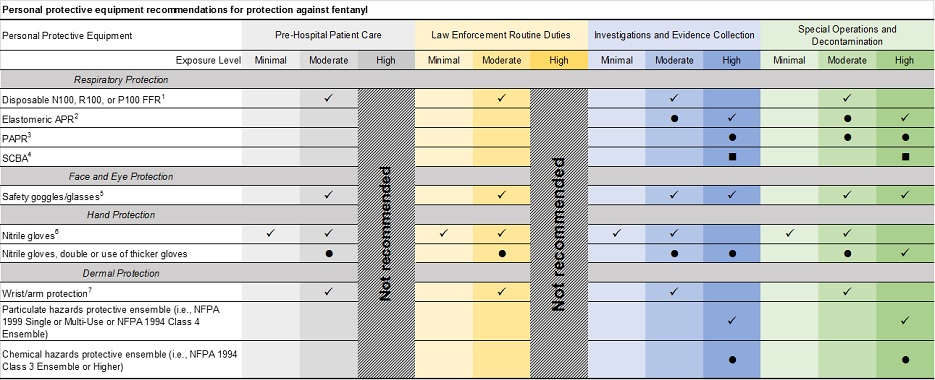The ongoing opioid epidemic in the United States is both alarming and dangerous, and perhaps no one understands that better than the first responders and law enforcement officials on the front lines of the crisis.
Day in and day out, they respond to emergency calls and arrive on scenes where they not only have to provide potentially life-saving care, but also assess the scene for the presence of toxic substances such as fentanyl, which can cause a number of symptoms upon contact.

Fentanyl is incredibly potent at 50-100 times stronger than morphine. And while pharmaceutical fentanyl is approved for treating severe pain, most recent cases of fentanyl-related overdoses and deaths are attributed to illegally made, synthetic versions of the drug. Overdose deaths involving synthetic opioids other than methadone, including fentanyl, rose nearly 47% from 2016-17, to more than 28,000. The number fentanyl confiscations is also on the rise, with the amount of powder fentanyl the Drug Enforcement Agency analyzed increasing almost 800% from 2014 to 2017.
The Centers for Disease Control and Prevention (CDC) and the National Institute for Occupational Safety and Health (NIOSH) have developed a number of guidelines intended to prevent occupational exposure and protect first responders who may come in contact with fentanyl or other synthetic opioids. NIOSH identifies pre-hospital care employees and law enforcement as two of the key job categories. Some of the best practices they recommend include:
- Follow standard safe operating procedures: First responders should assess the scene upon arrival for risks and determine whether illicit drugs such as fentanyl are present. If any fentanyl is identified:
- Refrain from eating, smoking or using the bathroom in the area.
- Keep your hands away from your face, avoiding your eyes, mouth and nose if you have come in contact with a surface suspected to have fentanyl on it.
- If not possible to avoid a field test, work out an incident-specific plan and ensure that personnel trained to conduct field testing perform the test while wearing the appropriate personal protective equipment (PPE).
- Wash your hands with soap or water upon leaving a scene where fentanyl was present to avoid exposure and cross-contamination. Do not use hand sanitizers or bleach solutions to clean contaminated skin.
- Ensure exceptional training takes place: Any first responder who may come in contact with fentanyl or its analogues as a result of their job must be thoroughly trained on how to conduct an on-site risk assessment. They should be required to show they understand:
- How to recognize the type and quantity of the fentanyl or other drugs at the scene
- The proper use of PPE, including when to use it, which PPE is appropriate and how to don and doff properly. The Occupational Safety and Health Administration (OSHA) provides standards for how PPE should be worn. They should also know the limitations of the PPE they’re using. For example, some PPE, such as gloves, can withstand exposure to fentanyl for varying amounts of time based on the quality of the product.
- The signs and symptoms of someone exposed to opioids
- Know your PPE: There are two factors that impact what PPE to choose – job category and the anticipated level of exposure.


Source: https://www.cdc.gov/niosh/topics/fentanyl/risk.html
It’s important to note that it’s possible for the level to change in real time, which could impact the type of PPE needed, so knowing how to adjust and having the proper PPE handy is critical.
Even with the most minimal risk, it is recommended that first responders wear nitrile gloves. Because powder is the most common form in which to find fentanyl, the gloves should be powderless and, in some cases, manufacturers have created black gloves that make it easier to see white powder. If a respirator is called for, those wearing it should be medically cleared, trained and fit-tested. OSHA provides guidance on fit-testing procedures.
Looking out for those looking out
First responders put their lives at risk as a part of their daily job. The spike in fentanyl confiscations is adding yet another dangerous scenario to their resumes. Making sure they receive the proper training and are outfitted with the appropriate equipment are critical to protecting those who bravely provide an invaluable service to our society.
